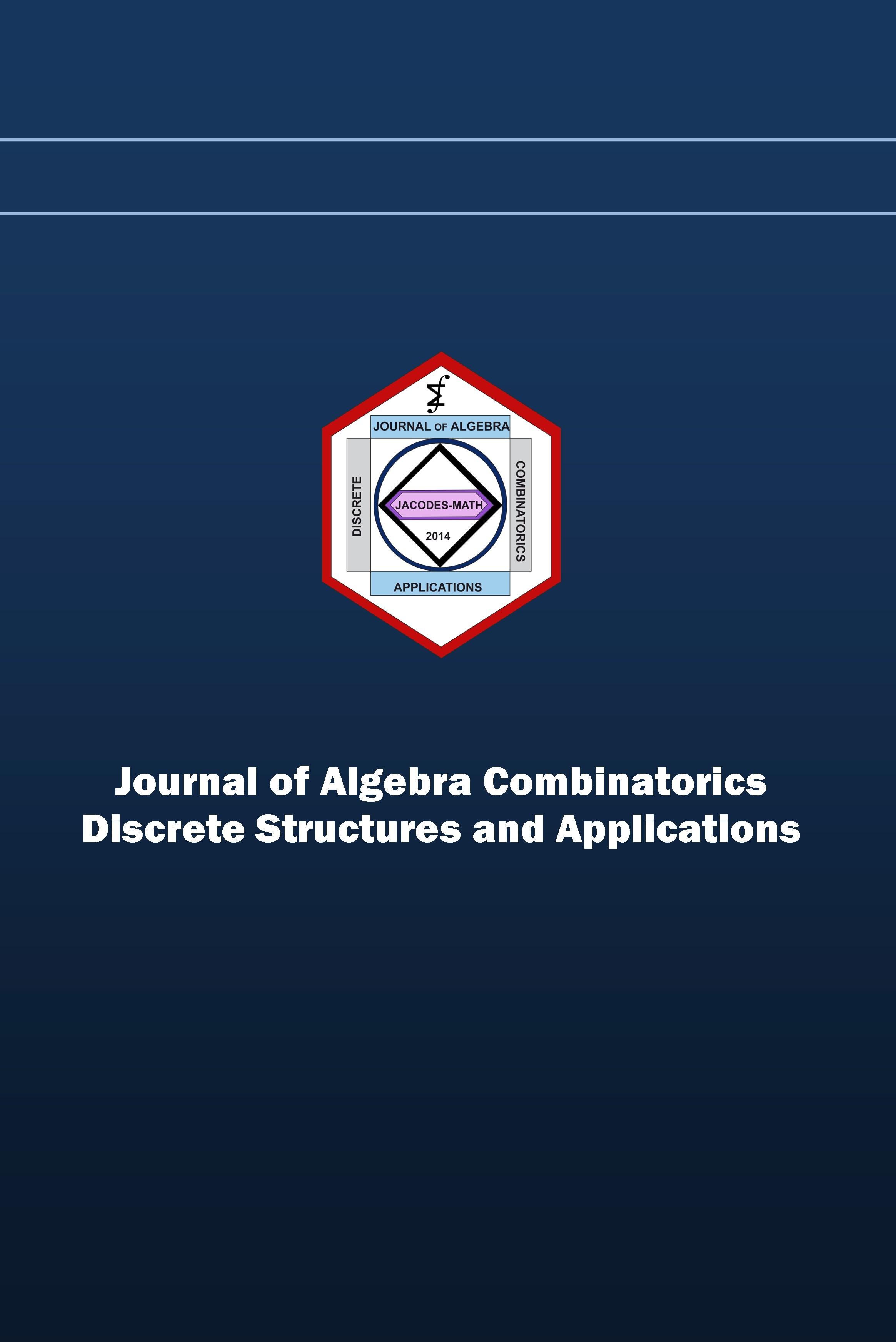Generalized hypercube graph $\Q_n(S)$, graph products and self-orthogonal codes
Generalized hypercube graph $\Q_n(S)$, graph products and self-orthogonal codes
A generalized hypercube graph $\Q_n(S)$ has $\F_{2}^{n}=\{0,1\}^n$ as the vertex set and two vertices being adjacent whenever their mutual Hamming distance belongs to $S$, where $n \ge 1$ and $S\subseteq \{1,2,\ldots, n\}$. The graph $\Q_n(\{1\})$ is the $n$-cube, usually denoted by $\Q_n$. We study graph boolean products $G_1 = \Q_n(S)\times \Q_1, G_2 = \Q_{n}(S)\wedge \Q_1$, $G_3 = \Q_{n}(S)[\Q_1]$ and show that binary codes from neighborhood designs of $G_1, G_2$ and $G_3$ are self-orthogonal for all choices of $n$ and $S$. More over, we show that the class of codes $C_1$ are self-dual. Further we find subgroups of the automorphism group of these graphs and use these subgroups to obtain PD-sets for permutation decoding. As an example we find a full error-correcting PD set for the binary $[32, 16, 8]$ extremal self-dual code.
Keywords:
Graphs, Designs, Codes Permutation decoding,
___
- A. Berrachedi, M. Mollard, On two problems about (0, 2)-graphs and interval-regular graphs, Ars
- Combin. 49 (1998) 303–309.
- W. Fish, J. D. Key, E. Mwambene, Graphs, designs and codes related to the n-cube, Discrete Math. 309(10) (2009) 3255–3269.
- F. Harary, G. W. Wilcox, Boolean operations on graphs, Math. Scand. 20 (1967) 41–51.
- W. C. Huffman. Codes and groups. In V. Pless and W. C. Huffman, Eds., Handbook of coding theory, Vol. 2, pp. 1345–1440, Elsevier Science Publishers, Amsterdam, The Netherlands, 1998.
- J. D. Key, P. Seneviratne, Permutation decoding for binary self-dual codes from the graph Qn, where n is even. In T. Shaska, W. C. Huffman, D. Joyner, and V. Ustimenko, Eds., Advances in Coding Theory and Cryptography, Series on Coding Theory and Cryptography, Vol. 3, pp. 152–159, World Scientific Publishing Co. Pte. Ltd., Hackensack, NJ, 2007.
- J. M. Laborde, R. M. Madani, Generalized hypercubes and (0, 2)-graphs, Discrete Math. 165/166 (1997) 447–459.
- F. J. MacWilliams, N. J. A. Sloane, The theory of error-correcting codes, Amsterdam: North-Holland, 1998.
- M. Mulder, (0, λ)-graphs and n-cubes, Discrete Math. 28(2) (1979) 179–188.
- Başlangıç: 2015
- Yayıncı: İrfan ŞİAP
Sayıdaki Diğer Makaleler
An active attack on a multiparty key exchange protocol
Reto SCHNYDER, Juan Antonio LÓPEZ-RAMOS, Joachim ROSENTHAL, Davide SCHİPANİ
The unit group of group algebra $F_qSL(2;Z_3)$
Swati MAHESHWARİ, R. K. SHARMA
Infinitely many nonsolvable groups whose Cayley graphs are hamiltonian
Generalized hypercube graph $\Q_n(S)$, graph products and self-orthogonal codes
